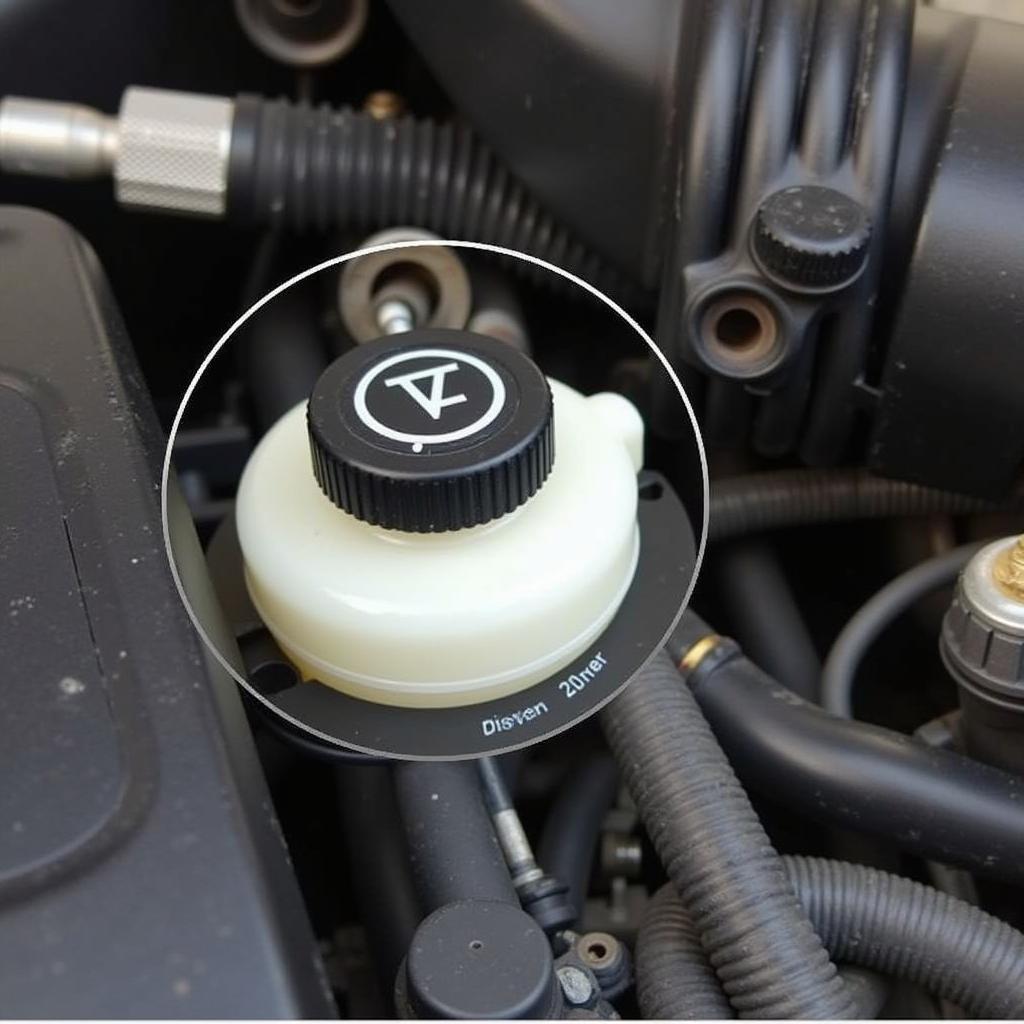The brake warning light on your dashboard is a crucial safety feature, designed to alert you to potential issues with your braking system. If the brake warning light in your 2000 Toyota RAV4 illuminates, it’s essential to address the problem promptly. Ignoring this warning could lead to decreased braking performance and potentially dangerous driving situations. This comprehensive guide will delve into the common causes of a 2000 RAV4 brake warning light and provide you with the knowledge to diagnose and potentially resolve the issue.
Understanding Your RAV4’s Brake Warning Light System
Before we jump into the specifics, let’s clarify what triggers your RAV4’s brake warning light. This light serves as a general indicator for several braking system-related problems, including:
- Low Brake Fluid: This is the most frequent culprit behind a lit brake warning light.
- Engaged Parking Brake: It’s easy to overlook, but sometimes the light simply indicates your parking brake isn’t fully released.
- Faulty Brake Light Switch: This switch signals the brake lights to activate when you press the pedal; if faulty, it can trigger the warning light.
- Worn Brake Pads: Your RAV4’s brake pads have wear indicators that activate the warning light when they reach a certain level of wear.
- ABS Issue: While less common, a problem within your Anti-lock Braking System (ABS) can also trigger the light.
 2000 RAV4 Brake Fluid Reservoir
2000 RAV4 Brake Fluid Reservoir
Diagnosing the Problem: A Step-by-Step Guide
Now that we understand the potential triggers, let’s outline a step-by-step process to help you diagnose why your 2000 RAV4’s brake warning light is on:
- Check the Parking Brake: Start with the simplest possibility. Ensure your parking brake is fully disengaged. If the light remains on, proceed to the next step.
- Inspect Brake Fluid Level: With the engine off, locate your RAV4’s brake fluid reservoir under the hood (refer to your owner’s manual if needed). Check the fluid level. If it’s below the “MIN” mark, you’ll need to add brake fluid.
- Important: Only use the brake fluid type specified in your owner’s manual. Using the incorrect fluid can damage your braking system.
- Examine Brake Pads: If the fluid level is fine, it’s time to inspect your brake pads. This will require removing a wheel to get a good look at the pads. If they appear significantly worn down, it’s time for a replacement.
- Consider Professional Diagnostics: If none of the above steps reveal the problem, it’s highly recommended to seek assistance from a qualified mechanic. They have the tools and expertise to diagnose more complex issues, such as a faulty brake light switch or a problem with the ABS system.
Addressing Low Brake Fluid: Safety First
If you find yourself with low brake fluid, it’s crucial to understand that this is more than just a simple top-up. Low brake fluid often indicates a leak within your braking system, which demands immediate attention.
 2000 RAV4 Brake Lines
2000 RAV4 Brake Lines
Do Not Drive with a Brake Fluid Leak: If you notice signs of a leak (such as fluid on the ground beneath your car or wetness around the brake lines), do not attempt to drive your RAV4. Continuing to drive with a leak can result in brake failure, putting you and others at serious risk.
When to Consult a Professional
While some brake warning light issues are simple to address, others require a trained eye and specialized equipment. Don’t hesitate to consult a qualified mechanic if:
- You’ve topped off the brake fluid but the light persists.
- You suspect a brake fluid leak.
- You’re unsure how to inspect or replace brake components.
- You suspect a problem with the brake light switch or ABS system.
Remember, your car’s brakes are your lifeline on the road. Never underestimate the importance of a functioning brake system. By understanding the potential causes behind a 2000 RAV4 brake warning light and taking prompt action, you’re prioritizing your safety and the safety of others on the road.
